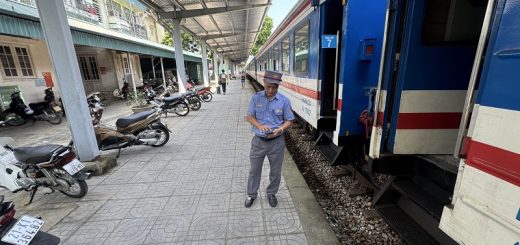The Nonsensical Branding of French Regional Trains
French regional trains feature some of the most nonsensical branding ever found on railway tracks, and the differences between the regional transport companies running them often leave first-time travellers confused.
TER, the French regional train
French regional trains are commonly known by the acronym TER, which stands for Transport Express Régional, meaning regional express train.
Since 1984, the name TER has been used by SNCF, the French National Railways, to designate regional services run by the transport authorities of French regional councils.
The name is quite clear and serves as a good brand, similar to how Intercités (IC) is immediately associated with its specific type of train service in France.
But of course, French transport executives had to complicate things and make life harder for train travellers, as usual.

Regional Train (TER) at the station of Mulhouse in France. ©AndyBTravels
The confusing branding of French regional trains
Each French region that operates its own regional trains – sometimes in cooperation with the national rail company SNCF – has created its own brand name to represent regional services.
TER Normandie, the regional train network in Normandy, has been branded as Nomad Train, for example.
Other regions have chosen even worse names, such as liO in Occitania or Rémi in the Centre-Val de Loire region which, if you asked people without prior knowledge, could easily be mistaken for the names of a Japanese battery maker or an Italian soap brand.
Although Zou! – the name of the regional transport network in the Provence-Alpes-Côte d’Azur region – sounds just as ridiculous, at least it is branded as “TER Zou!” on regional trains, making it clear that we are dealing with a railway operator.
Below is a great overview of the confusing mess of French regional train operators, as neatly summarised by Fnaut, the National Federation of Transport User Associations.
Websites and cards
As you can see in the image above, it gets even more complicated than just the branding, as each regional transport authority also has its own website, mobile applications, and transport cards.
Using French logic, their names are often different from those given to the regional trains!
Take Brittany, for example, where the regional trains are branded as BreizhGo, but you use the KorriGo website to look up itineraries within the region and the KorriGo card to pay for most regional and local transport.
Different rules
Then there are the different rules set by regional transport authorities, which make rail travel even more difficult for first-time visitors.
Although most regional TER trains in France don’t require reservations – you simply hop on board with a valid ticket and take any available seat – some, rather strangely, do have compulsory reservations.
For example, the Krono+ and Krono trains (yet another two confusing brand names for TER services!) operated by Nomad Train from Paris to Normandy and vice versa require seat reservations, including services between Paris, Caen, and Cherbourg, as well as those linking the French capital to Rouen, Le Havre, Deauville, and Granville.
To complicate matters even further, the TER Normandie website states that “some trains offer a coach with free seating from Monday to Thursday (except on the eve of and public holidays) for subscribers who do not have a reservation on Krono+ and Krono Paris trains”.
Similar seat reservation systems are also used by a few other regional train operators in France on their main routes linking their region with Paris.
Although having a guaranteed seat might sound appealing on paper, in reality, such a system is downright passenger-unfriendly, as it’s preferable to stand on a train and still reach your destination rather than be denied boarding and left behind on the station platform because all seats are taken.
And it’s not as if French regional trains are known for having a great schedule with a clockface timetable and departures every half hour, as being left behind could easily mean the next train isn’t due for another two hours!
How to do it right: Germany!
When it comes to clear branding and running an efficient regional train network, France could learn a lot from Germany.
In Germany, many local and regional trains are also operated by transport companies other than Deutsche Bahn, the national operator.
For example, agilis operates some regional services in Bavaria, bwegt is the brand of the regional transport authorities in Baden-Württemberg, and large private operators such as Transdev are also active in Germany.
Yet all trains still use the same national branding, with RE trains representing Regional Express trains, RB standing for slower Regional Bahn trains, and S-Bahn trains being urban and suburban trains that stop at every station – regardless of which company operates them.
All these trains can be searched on the route planner on the Deutsche Bahn website and booked through it.
Germany also offers excellent value state and national rail passes, such as the Deutschland-Ticket, which allows unlimited travel on regional and local trains throughout the country for just 49 euro per month (58 euro from 1st of January 2025 onwards).
When you think about it and realise that Germany is actually a much more decentralised country than France, these differences between the French and German regional transport networks become even more baffling!
Conclusion
French regional trains (TER) feature some of the most confusing and nonsensical branding in the world.
Each regional transport authority in France has branded its trains differently, has its own website and route planner, and uses its own transport cards – so much for the national integration of transport services!
Then there’s the bizarre situation where some regional trains require seat reservations in certain circumstances, which is both complicated and highly passenger-unfriendly.
When it comes to running a coherent regional train network across the country, France could learn a lot from its German neighbours.






